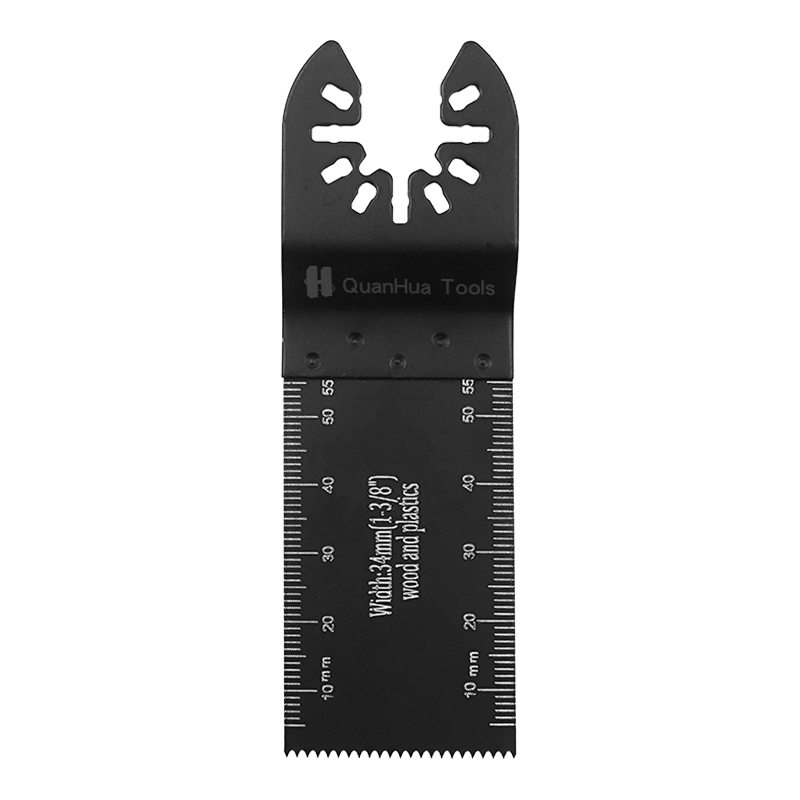1. Cutting Speed:
The thickness of a semi-circular saw blade has a substantial effect on its cutting speed, which is critical for both efficiency and productivity in various applications. Thicker blades, due to their increased mass, encounter more resistance as they cut through materials. This resistance arises from the greater contact area and the more substantial material displacement required during the cutting process. As a result, thicker blades tend to cut more slowly compared to thinner blades. The added mass of a thicker blade can also lead to increased friction and heat generation, further slowing down the cutting speed. In contrast, thinner blades, with their reduced thickness, create less friction and encounter less material resistance. This allows them to cut through materials more quickly and with less effort. However, this increased cutting speed comes at the cost of potentially reduced blade life and less suitability for very hard or abrasive materials. Thinner blades might also require more frequent adjustments and maintenance to ensure optimal cutting performance.
2. Cutting Precision:
The precision of a cut is profoundly influenced by the thickness of the saw blade. Thicker blades generally offer superior stability during cutting operations, which contributes to more accurate and consistent cuts. This stability is due to the greater rigidity and structural integrity of the thicker blade, which resists bending or flexing under the stress of cutting. As a result, thicker blades can produce cleaner and more precise cuts, particularly in challenging materials such as concrete or hard brick. This stability is crucial for applications requiring high levels of detail and accuracy, such as in masonry work or intricate brick patterns. On the other hand, thinner blades, while they can achieve fine cuts, are more susceptible to bending or deflecting, especially under heavy loads or when cutting dense materials. This can lead to less precise cuts and potential deviations from the desired cut line. For projects demanding exacting standards, selecting a thicker blade can significantly improve the outcome by ensuring a steady and accurate cutting path.
3. Blade Life:
The lifespan of a saw blade is closely tied to its thickness, affecting both cost efficiency and operational effectiveness. Thicker blades are generally more durable and long-lasting due to their increased material strength and robustness. This additional thickness provides extra material that can absorb the wear and tear from cutting hard or abrasive materials, extending the blade’s overall service life. The thicker construction helps to resist deformation, chipping, and premature dulling, making it ideal for high-demand cutting tasks. Conversely, thinner blades, while initially offering quicker cutting speeds, tend to wear out more rapidly due to their reduced thickness and lower material volume. The thinner blade's susceptibility to wear and tear means it may require more frequent replacements or resharpening, leading to increased operational costs and downtime. For high-volume or heavy-duty cutting applications, investing in a thicker blade can be more cost-effective in the long run, as it reduces the need for frequent replacements and maintains cutting performance over an extended period.
4. Type of Material:
Choosing the appropriate blade thickness is essential for effectively cutting different types of materials. For cutting hard or dense materials like brick, stone, or concrete, a thicker blade is generally preferred. The increased thickness provides the necessary strength and stability to handle the intense pressure and resistance encountered during the cutting process. Thicker blades can withstand the stresses involved in cutting through tough materials without warping or losing their cutting edge. They also offer greater durability and longevity, which is crucial for maintaining consistent cutting performance. In contrast, thinner blades are more suitable for softer materials or applications where speed and precision are prioritized. Thinner blades may struggle with hard materials, potentially leading to faster wear or even blade failure. Selecting the right blade thickness based on the material being cut ensures optimal performance and helps avoid issues such as reduced cutting efficiency, blade damage, or subpar results.
5. Heat Dissipation:
Effective heat dissipation is a critical factor in maintaining the performance and longevity of a saw blade. The thickness of the blade affects its ability to manage heat generated during cutting. Thicker blades generally offer better heat dissipation due to their larger mass and surface area, which helps to distribute and dissipate heat more effectively. This reduced heat concentration lowers the risk of overheating, which can cause thermal damage to both the blade and the material being cut. Excessive heat can lead to blade warping, premature dulling, and reduced cutting efficiency. Thinner blades are more prone to heat buildup because they have less material to absorb and dissipate the heat generated during cutting. This can lead to overheating issues, requiring the blade to be cooled more frequently or affecting its performance. Proper heat management is essential for maintaining blade integrity and ensuring consistent cutting quality, making blade thickness an important consideration in choosing the right tool for the job.
6. Cutting Efficiency in Different Applications:
The efficiency of a 65mm Hard Alloy Semi Circular Hard Alloy Brick Cutting Saw Blade in various cutting applications is heavily influenced by its thickness. For tasks that involve precision cutting, such as detailed brickwork or fine masonry, a thinner blade may be preferred due to its ability to create more delicate cuts and achieve smoother finishes. Thinner blades excel in applications where speed and precision are crucial, and they can handle lighter cutting tasks effectively. On the other hand, for heavy-duty applications that involve cutting large volumes of dense or abrasive materials, a thicker blade is typically more efficient. The added thickness provides the strength and durability needed to handle the increased stress and material resistance associated with such tasks. Thicker blades also contribute to longer blade life and reduced wear, making them more suitable for demanding applications. Understanding the specific requirements of the cutting task and selecting a blade with the appropriate thickness helps to optimize cutting efficiency, improve results, and enhance overall productivity.













